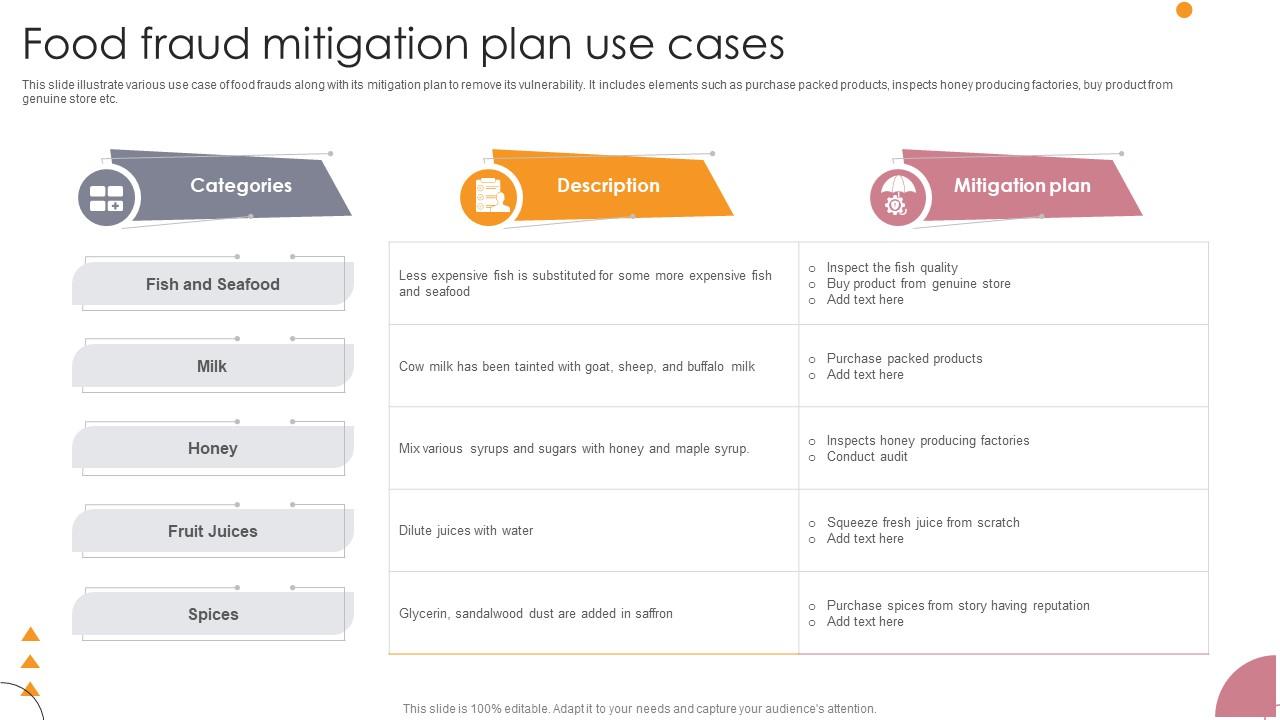Why Do Food Businesses Fail? Analysis And Mitigation

Table of Contents
Lack of Planning and Financial Mismanagement
Robust business planning and financial control are cornerstones of success in the food industry. Many food businesses fail due to a lack of foresight and inadequate financial management. Let's delve into the critical areas:
Insufficient Market Research
Thorough market analysis is paramount before launching any food business. Ignoring this crucial step can lead to disastrous consequences.
- Analyzing competitor landscape: Identify your direct and indirect competitors, analyzing their strengths, weaknesses, pricing, and target audience.
- Identifying target audience: Define your ideal customer – their demographics, preferences, and spending habits.
- Understanding local market demand: Research the local culinary scene, identifying gaps in the market and potential demand for your offerings.
- Assessing pricing strategies: Analyze competitor pricing and determine a profitable pricing strategy that aligns with your target market and costs.
Ignoring market research can result in a poorly designed menu, incorrect pricing that fails to attract customers, and ultimately, a low customer base leading to business failure. Understanding your market is the foundation for a successful food business.
Inadequate Funding and Cash Flow Management
Securing sufficient startup capital and effectively managing cash flow are vital for long-term viability. Many restaurants fail due to undercapitalization and poor financial planning.
- Securing funding: Explore various funding options, including personal savings, loans, investors, and grants.
- Creating realistic budgets: Develop detailed budgets encompassing all startup costs and ongoing operational expenses.
- Managing expenses: Implement cost-control measures to minimize waste and maximize profitability.
- Controlling inventory: Implement an efficient inventory management system to minimize food waste and spoilage.
Running out of cash is a major cause of restaurant failure. Contingency planning, including securing lines of credit, is crucial to navigate unexpected challenges and maintain operational stability.
Poor Location Selection
Location, location, location – it's a cliché, but a critically important factor for food businesses. A poor location can severely limit your potential for success.
- Foot traffic analysis: Assess pedestrian traffic patterns to determine the potential customer base.
- Proximity to target customers: Ensure your location is easily accessible to your target demographic.
- Accessibility: Consider factors such as parking availability, public transportation access, and ease of navigation.
- Local competition: Analyze the existing competition in the area and determine how your business will differentiate itself.
Numerous examples demonstrate how poor location choices have doomed even well-conceived restaurant concepts. Careful location selection is an investment in your future success.
Operational Inefficiencies and Poor Management
Day-to-day operations and management practices significantly impact a food business's success. Inefficiencies and poor management can quickly lead to financial losses and ultimately, closure.
Inefficient Food Preparation and Service
Streamlined operations are crucial for maximizing efficiency and profitability. Slow service and inefficient kitchen workflows can negatively impact customer satisfaction and bottom line.
- Efficient kitchen layout: Design your kitchen for optimal workflow and minimize wasted movement.
- Skilled staff: Invest in hiring and training skilled staff who can work efficiently and effectively.
- Effective order management: Implement systems to manage orders quickly and accurately.
- Quick service times: Aim for fast and efficient service to maximize customer turnover.
Slow service leads to unhappy customers, decreased table turnover, and ultimately, lower profits. Investing in efficient processes is an investment in your business's success.
Poor Staff Management and Employee Retention
A strong team is essential for a successful food business. High employee turnover is costly and negatively impacts consistency and service quality.
- Employee training: Provide comprehensive training to ensure your staff is well-equipped to perform their roles effectively.
- Fair compensation: Offer competitive wages and benefits to attract and retain quality employees.
- Positive work environment: Foster a positive and supportive work environment to boost morale and productivity.
- Effective leadership: Implement strong leadership to guide and motivate your team.
High employee turnover is expensive. Investing in your employees leads to improved retention, higher morale, better service, and ultimately increased profitability.
Lack of Technology Adoption
Technology plays an increasingly important role in the food industry. Embracing technology can improve efficiency, enhance customer experience, and boost profitability.
- POS systems: Utilize point-of-sale systems to streamline order processing, payment processing, and inventory management.
- Online ordering: Offer online ordering options to increase convenience for customers.
- Inventory management software: Implement software to optimize inventory control and minimize waste.
- Customer relationship management (CRM): Use CRM systems to track customer preferences and improve loyalty programs.
Technology enhances efficiency and the customer experience, leading to increased profitability and a competitive edge.
Marketing and Customer Engagement Failures
Effective marketing and building strong customer relationships are critical for sustained success in the competitive food industry. Ignoring these aspects can doom even the best food concepts.
Ineffective Marketing Strategies
A strong marketing plan is essential for attracting and retaining customers. Many food businesses fail to leverage the power of marketing effectively.
- Social media marketing: Utilize social media platforms to reach a wider audience and engage with potential customers.
- Local advertising: Invest in local advertising strategies to target your immediate community.
- Online reviews: Actively manage online reviews to build reputation and address customer concerns.
- Loyalty programs: Implement loyalty programs to reward repeat customers and encourage repeat business.
Effective marketing is about reaching the right audience with the right message at the right time. A well-defined marketing strategy is crucial for long-term success.
Poor Customer Service and Lack of Brand Identity
Exceptional customer service is paramount. Building strong relationships and creating a consistent brand identity are key to fostering customer loyalty and positive word-of-mouth marketing.
- Responding to customer feedback: Actively solicit and respond to customer feedback to address concerns and improve service.
- Building relationships: Create a welcoming and friendly atmosphere to build rapport with customers.
- Consistent branding: Maintain a consistent brand identity across all platforms and touchpoints.
- Positive customer experience: Strive to provide a positive and memorable experience for every customer.
Great customer service drives repeat business and positive word-of-mouth marketing, leading to increased profitability and sustained growth.
Failure to Adapt to Market Trends
The food industry is dynamic. Failing to adapt to evolving trends, technologies, and customer preferences can lead to obsolescence and eventual failure.
- Keeping up with food trends: Stay informed about current food trends and incorporate them into your menu offerings.
- Incorporating new technologies: Embrace new technologies to improve efficiency and enhance the customer experience.
- Menu innovation: Regularly update your menu to offer new and exciting dishes.
- Responding to customer feedback: Use customer feedback to adapt your offerings and improve service.
A lack of adaptation leads to stagnation and irrelevance. Embracing change and adapting to market trends is essential for long-term viability.
Conclusion
This analysis reveals that the success or failure of a food business hinges on careful planning, efficient operations, effective marketing, and consistent adaptation to market dynamics. Avoiding pitfalls like poor financial management, ineffective marketing, and neglecting customer service is paramount. By understanding these key factors and implementing the mitigation strategies outlined above, you can significantly increase your chances of building a successful and sustainable food business. Don't let your food business fail – start planning strategically today!

Featured Posts
-
 Aprovacao Da Cidade Space X Moradores Dao Sinal Verde Ao Projeto Nos Eua
May 29, 2025
Aprovacao Da Cidade Space X Moradores Dao Sinal Verde Ao Projeto Nos Eua
May 29, 2025 -
 Moto Gp News Honda Rider Luca Marini Suffers Injuries In Suzuka Test Crash
May 29, 2025
Moto Gp News Honda Rider Luca Marini Suffers Injuries In Suzuka Test Crash
May 29, 2025 -
 Performance Financiere De Nrj Group Un Premier Trimestre Difficile
May 29, 2025
Performance Financiere De Nrj Group Un Premier Trimestre Difficile
May 29, 2025 -
 Ubisoft Addresses Harassment Concerns In Assassins Creed Valhalla
May 29, 2025
Ubisoft Addresses Harassment Concerns In Assassins Creed Valhalla
May 29, 2025 -
 Westerveld Questions Mamardashvilis Season
May 29, 2025
Westerveld Questions Mamardashvilis Season
May 29, 2025
Latest Posts
-
 Kawasaki W175 Atau Honda St 125 Dax Panduan Memilih Motor Sesuai Kebutuhan
May 30, 2025
Kawasaki W175 Atau Honda St 125 Dax Panduan Memilih Motor Sesuai Kebutuhan
May 30, 2025 -
 Memilih Motor Klasik Modern Perbandingan Kawasaki W175 Dan Honda St 125 Dax
May 30, 2025
Memilih Motor Klasik Modern Perbandingan Kawasaki W175 Dan Honda St 125 Dax
May 30, 2025 -
 Kawasakis 2025 Ninja 650 Krt Edition Features And Release Date
May 30, 2025
Kawasakis 2025 Ninja 650 Krt Edition Features And Release Date
May 30, 2025 -
 Honda St 125 Dax Vs Kawasaki W175 Ulasan Detail Motor Klasik Modern
May 30, 2025
Honda St 125 Dax Vs Kawasaki W175 Ulasan Detail Motor Klasik Modern
May 30, 2025 -
 2025 Kawasaki Ninja 650 Krt A Closer Look At The Launched Edition
May 30, 2025
2025 Kawasaki Ninja 650 Krt A Closer Look At The Launched Edition
May 30, 2025
